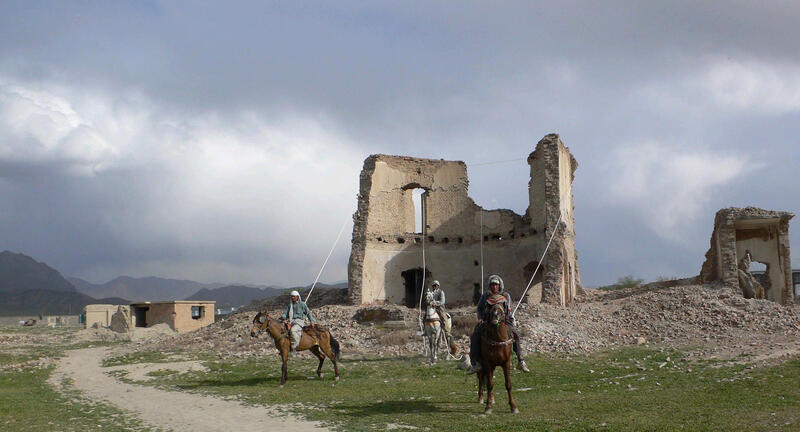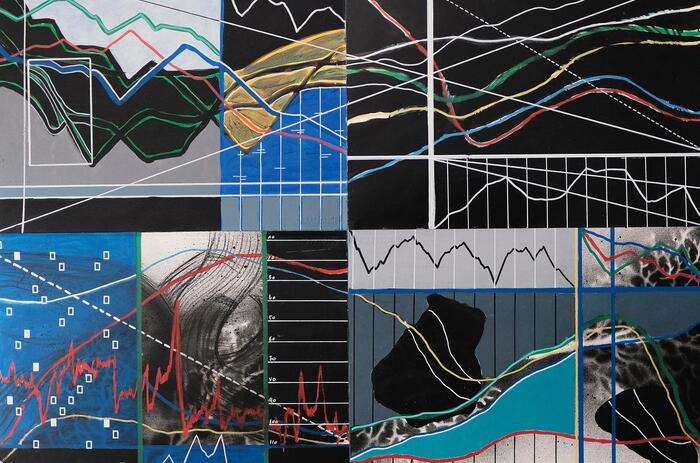BORDERS YESTERDAY AND TODAY. ES BALUARD MUSEU INVITES SPECTATORS TO REFLECT AROUND ITS FOUNDATIONS
On March the 26, the Es Baluard Museu d'Art Contemporani de Palma inaugurated the exhibition Memory of Defence: Physical and Mental Architectures. Curated by Imma Prieto and Pilar Rubí, the project is a collective dialogue between contemporary artists from all over the world and the artwork of classical painters such as Master of the Conquest of Mallorca and Tommaso Realfonso on the notions of frontiers and defence.

As the curators explain in the curatorial text of Memory of Defence: Physical and Mental Architectures, the exhibition takes as its starting point the very foundations of the Palma museum. Located over the old fortification of Palma de Mallorca, the Es Baluard Museu operates as the main object of reflection of this project: "Is it legitimate today to talk about defensive architecture? Is there any relation between the medieval walls, the wall that separates Palestine and Israel or the barbed wire fences of Ceuta and Melilla?", are some of the questions that Imma Prieto and Pilar Rubí ask themselves. "From what or from whom do we protect ourselves?” Thus, the artworks that make up the exhibition open up points of reflection in relation to the sense that it makes, in the 21st century, to construct objects, architectural spaces —both physical and mental— with the ultimate aim of reinforcing political discourses of protection.
The exhibition is conceived in three sections that, in part, develop a historical tour of the notion of the border or wall. It is in the first section where, for example, the reproduction of Conquest of Mallorca (13th century), by the Master of the Conquest of Mallorca, is exhibited. In this series of paintings, Prieto and Rubí write: "We see how the Arab settlers defend themselves from the assault of the Christian warriors from the towers of the wall". And they give way to a contemporary reflection: "What is their story? Who protects themselves from the other? Who is the other? Their point of view was obviated by the Eurocentric worldview left to us, in this case, by the chronicles of the time".
As a logical consequence of the reflective process, in the second section a dialectic on fortifications appears in the work of artists such as the painters Juan Genovés (Valencia, 1930) and Peter Halley (New York, 1953). And in an even more actual and political approximation, the artworks of Roy Dib (Tripoli, 1983) and Lida Abdul (Kabul, 1973) are exhibited. This section is complemented by an installation by the South African aritst Kemang Wa Lehulere (Cape Town, 1984) which, together with a compilation of testimonies of Palma's inhabitants, interviewed by the museum's education department, bring together the whole reflection from a specific perspective.
Ultimately, and with the aim of developing a body of work that directly dialogues with our contemporaneity, the third section brings together the oeuvres of Antoni Muntadas (Barcelona 1942), Mounir Fatmi (Tangiers, 1970), the duo Mª Jesús González Fernández (Valencia, 1978) and Patricia Gómez Villaescusa (Valencia, 1978), and Petrit Halilaj (Kosovo, 1986). Here the notion of fortification or defence points more to ideological borders and architectural elements that "block [certain institutions] from becoming a community".





